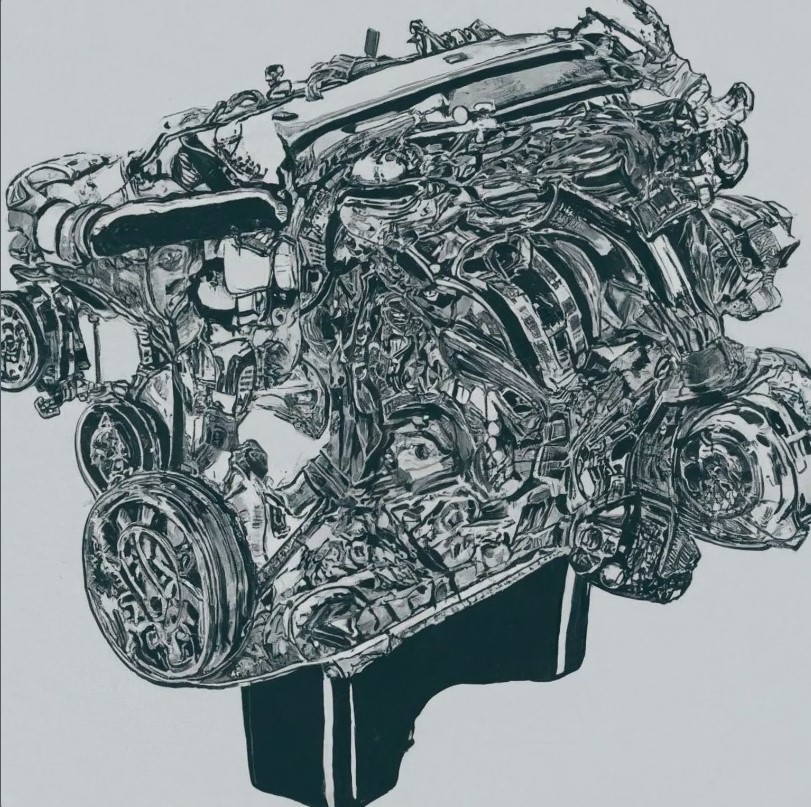
Buying a car is a significant investment, and ensuring the reliability and condition of its petrol engine is crucial for a smooth and trouble-free driving experience. Here's a detailed guide on how to inspect a petrol engine before making a purchase:
1. Visual Inspection:
- Inspect the engine compartment for any oil leaks or coolant leaks.
- Check the condition of the drive belts (alternator, air conditioning, power steering) for wear and cracks.
- Pay attention to the condition of the battery, ensuring the terminals are clean and free of corrosion.
- Check the oil level and condition in the engine. It should be clean and free of contaminants.
2. Engine Start-up:
- Ask the seller not to start the engine until you arrive so that you can inspect the starting process.
- When starting the engine, pay attention to the sounds and vibrations. A normal start should be smooth and without any unusual noises or knocks.
3. Engine Performance Check:
- After starting the engine, let it idle for a few minutes to warm up.
- Check for any smoke from the exhaust pipe. Gray or blue smoke may indicate engine problems.
- Listen to the engine sounds during acceleration. They should be smooth and without knocks or ticks.
- Check for any unusual noises or vibrations that may indicate engine problems.
4. Test Drive:
- Request a test drive to evaluate the engine's performance in motion.
- Pay attention to the engine's response to throttle input. The response should be immediate and without delays.
- Check the noise level and vibrations at different speeds and driving conditions.
- Evaluate the transmission's operation. Shifts should be smooth and without jerks or hesitations.
5. Documentation and Maintenance:
- Review the vehicle's maintenance history. Ensure that regular maintenance was performed on time.
- Check the documentation for oil and filter changes, as well as any repairs or component replacements.
6. Professional Inspection:
- Consider having the car professionally inspected by a mechanic or service center.
- They can conduct a more thorough inspection, including computer diagnostics of the engine and checking the condition of its major components.
7. Compression Check:
- A compression check in the cylinders can provide insight into the condition of the pistons, piston rings, and valves.
- This should be performed by a professional mechanic using specialized equipment.
8. Risk Assessment and Signs of Major Repair:
- Pay attention to signs indicating the need for major engine repairs:High engine noise levels, especially unusual knocks or rumbles.Strong vibrations or shaking during engine operation.Increased oil or coolant consumption without visible leaks.Significant smoke from the exhaust system, particularly blue or gray smoke.Uneven engine operation, misfires, or ignition failures.
- High engine noise levels, especially unusual knocks or rumbles.
- Strong vibrations or shaking during engine operation.
- Increased oil or coolant consumption without visible leaks.
- Significant smoke from the exhaust system, particularly blue or gray smoke.
- Uneven engine operation, misfires, or ignition failures.
- If you notice one or more of these signs, it may indicate serious engine issues requiring major repairs.
- Consider the cost and complexity of major engine repairs when evaluating the car's price and making the final decision to purchase.
By following these steps, you can conduct a thorough inspection of the petrol engine and make an informed decision when purchasing a used car, ensuring that you're investing in a vehicle with a reliable and well-functioning engine. Remember, a comprehensive inspection can save you from costly repairs and potential headaches in the future.

